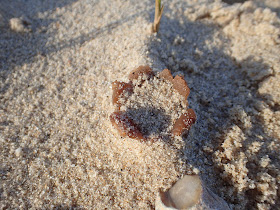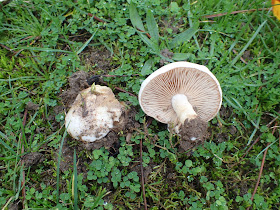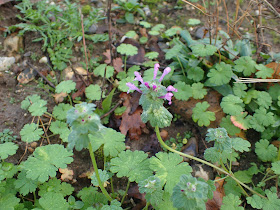Late December 2022
My last patch visit of the year. The single remaining Scaup was apparently present in the morning, but I couldn't see it in the afternoon. The bird highlight was therefore the pink-billed Tufted Duck that has been present recently. I walked along the river as far as Whitlingham Marsh, seeing a Kingfisher shoot across the river. The fungal highlight was Henningsomyces candidus on an old log, and I also noticed an interesting grey and pink mite. And that, having finally caught up, was 2022. Lets see what 2023 brings...


















































